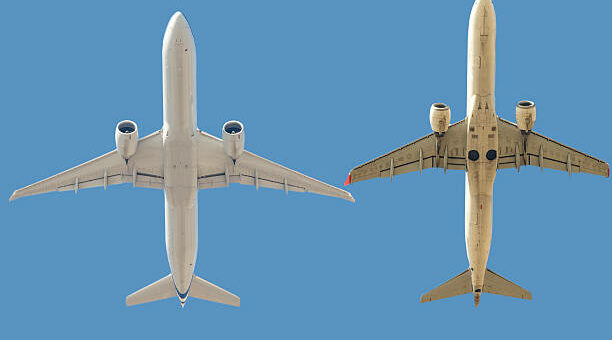
Introduction
The world of commercial aviation features a wide variety of aircraft types tailored to specific missions. Among the most significant distinctions in aircraft categories is between narrow-body and wide-body planes. These classifications influence everything from range and seating capacity to airline economics and passenger experience. In this comprehensive guide, we’ll explore the fundamental differences, pros and cons, and future trends of narrow-body vs wide-body commercial aircraft.
1. Understanding the Basics
1.1 What is a Narrow-Body Aircraft?
Narrow-body aircraft, also known as single-aisle aircraft, typically feature a single aisle running from the front to the back of the plane. They are commonly used for short to medium-haul routes.
Common characteristics:
- Single aisle with 3–6 seats per row
- Cabin width under 4 meters (~13 feet)
- Range: typically 3,000 to 6,000 km
Examples:
- Boeing 737 series
- Airbus A320 family
- Embraer E190/195
1.2 What is a Wide-Body Aircraft?
Wide-body aircraft, or twin-aisle planes, feature two aisles and are designed for long-haul routes and higher passenger volumes.
Key features:
- Two aisles with 7–10 seats per row
- Cabin width over 5 meters (~16 feet)
- Range: typically 8,000 to 15,000 km
Examples:
- Boeing 777 and 787 Dreamliner
- Airbus A330, A350, A380
2. Aircraft Design and Cabin Layout
2.1 Fuselage Width and Seating Configuration
The fuselage width determines the seating configuration and comfort levels. Narrow-body aircraft usually offer 3-3 seating, whereas wide-bodies can range from 2-4-2 to 3-4-3 layouts.
Comparison Table:
| Feature | Narrow-Body | Wide-Body |
|---|---|---|
| Aisles | 1 | 2 |
| Seats per Row | 4–6 | 7–10 |
| Cabin Width | < 4m | > 5m |
| Max Passengers | 200–250 | 300–850 |
2.2 Cargo and Galley Space
Wide-body aircraft typically include larger cargo holds and more galley space. This allows for:
- Increased baggage capacity
- More comprehensive in-flight service
- Greater support for international catering standards
Narrow-body planes, with limited space, often prioritize efficient galley placement and modular storage systems to maximize usable area.
3. Performance Capabilities
3.1 Range and Mission Profile
Narrow-body aircraft are best suited for:
- Short to medium-haul routes (domestic and regional)
- Quick turnarounds and frequent flights
Wide-body aircraft are ideal for:
- Long-haul international flights
- High-capacity transcontinental and intercontinental routes
3.2 Fuel Efficiency and Cost
Narrow-bodies are generally more fuel-efficient per seat on shorter routes, while wide-bodies excel in efficiency over longer distances when fully loaded.
Fuel Comparison:
- Narrow-body (e.g., A320neo): ~2.3 L/100 km per passenger
- Wide-body (e.g., A350): ~2.8 L/100 km per passenger
Operating cost drivers:
- Fuel burn and weight
- Maintenance complexity
- Airport gate and runway fees
4. Passenger Experience and Comfort
4.1 Cabin Space and Ambience
Wide-body cabins provide:
- More spacious interiors
- Quieter cabins due to distributed engines
- Better air quality and lighting systems
Narrow-body aircraft are:
- More compact, leading to less aisle and overhead bin space
- Often used for shorter trips where space is less critical
4.2 In-Flight Services and Amenities
Wide-body planes often offer:
- Full meal service, IFE systems, Wi-Fi
- Multiple lavatories and galleys
- Lie-flat business class and first-class options
Narrow-body services vary by airline and route but generally include:
- Snacks and drinks
- Compact lavatories and seat pitch
- Optional Wi-Fi and IFE on newer models
5. Airline Strategy and Fleet Planning
5.1 Route Selection and Load Factor
Airlines choose aircraft based on:
- Route length and demand
- Airport infrastructure
- Seasonal traffic
Narrow-bodies dominate high-frequency short routes. Wide-bodies are deployed on:
- Hub-to-hub connections
- Long-haul business and leisure routes
5.2 Cost-Benefit Analysis for Airlines
Factors affecting aircraft selection:
- Initial purchase cost (narrow-body: ~$100M, wide-body: ~$250M+)
- Crew training and compatibility
- Maintenance and operational flexibility
Fleet Planning Example:
| Airline Type | Preferred Aircraft Type |
| Low-cost carrier | Narrow-body (e.g., A320) |
| Full-service | Mixed (e.g., A320 + A350) |
| Global network | Wide-body (e.g., 777, 787) |
6. Market Trends and Innovations
6.1 Rise of Long-Range Narrow-Bodies
Models like the A321XLR and Boeing 737 MAX 10 are changing the game by enabling:
- Transatlantic and medium-haul routes
- Point-to-point service bypassing hubs
Benefits:
- Lower costs for airlines
- More direct flights for passengers
- Better fleet utilization
6.2 Wide-Body Aircraft in a Post-Pandemic World
Wide-body aircraft faced significant reductions during the COVID-19 pandemic. However, they are rebounding with:
- Enhanced fuel-efficient models (e.g., 787-10, A350-1000)
- Shift to premium leisure travel
- Focus on cargo conversions for aging wide-bodies
6.3 Sustainability and Aircraft Design
Both aircraft types are evolving to meet sustainability targets:
- Lightweight materials (carbon composites)
- Efficient engines (GE9X, LEAP-1A)
- Hybrid and electric propulsion in future designs
7. Conclusion: Choosing the Right Aircraft for the Mission
In the ongoing discussion of narrow-body vs wide-body commercial aircraft, there is no one-size-fits-all answer. Each aircraft type serves a distinct purpose and excels in specific operational contexts.
Narrow-body aircraft offer flexibility, lower operating costs, and are perfect for high-frequency regional travel. Wide-body planes shine on long-haul routes with high passenger volumes and premium services.
As the aviation industry embraces new technologies and passenger preferences evolve, airlines will continue to refine their fleets for maximum efficiency, comfort, and profitability.